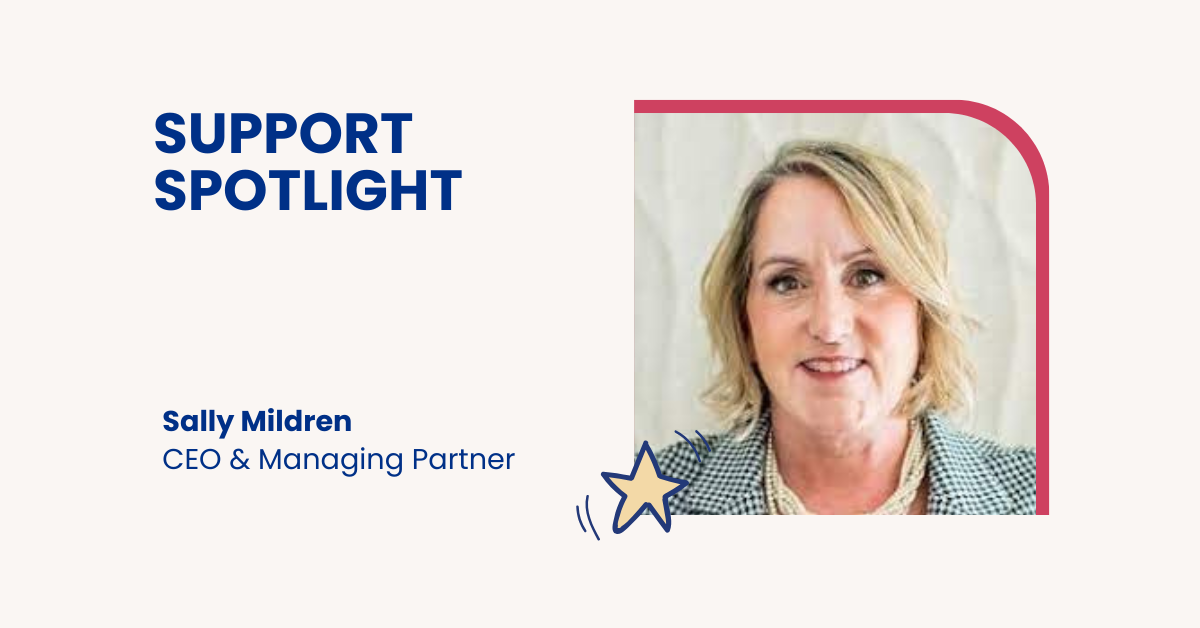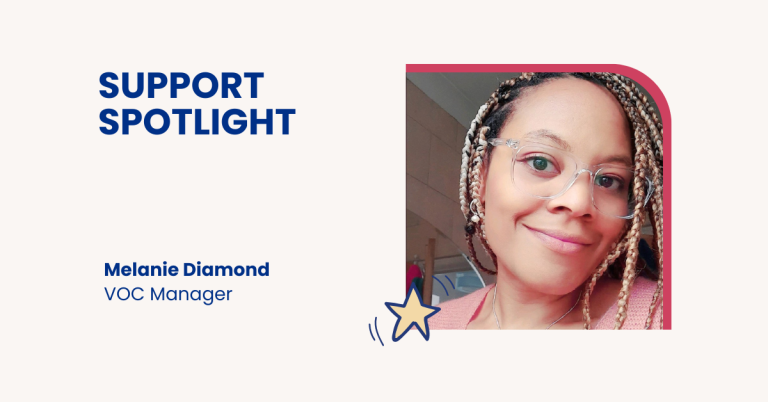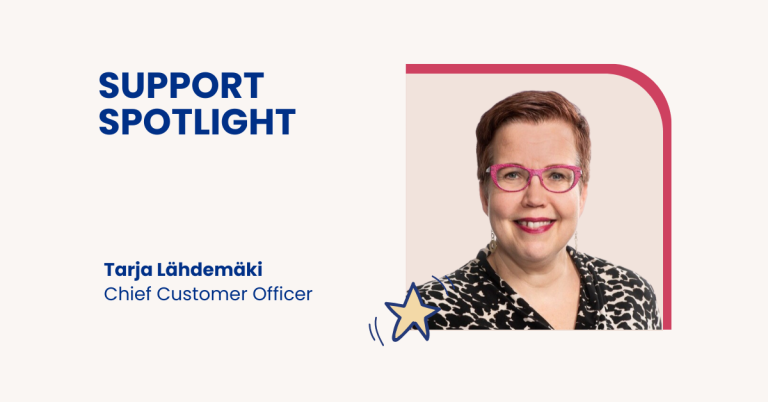How can customer experience leaders justify their investments and drive meaningful change within organizations? In this interview, we had the pleasure of speaking with Sally Mildren, CEO and Managing Partner of Boss Lady Consulting, to explore the key metrics that CX leaders must understand to align their initiatives with primary business drivers, as well as the vital role of cultural buy-in in successful customer experience transformation.
Can you start by telling a bit about your journey, how did you end up working in customer experience?
As the marketing director for a large health insurance company, I began to notice consistent feedback from our customers and partners about the same friction points. The customer experience was divided into six different divisions, and each division would handle a different aspect of the customer journey. However, I noticed that people were fixing the same issues without ever collaborating or understanding the root cause. This lack of coordination led to a fragmented approach to problem-solving that failed to address the bigger picture.
To address the issue, I proposed a pilot program for customer experience that would bring all the divisions under one leader – myself. I was then appointed Vice President of Customer Experience, and my responsibilities expanded from marketing outreach to managing over 100 staff members and being responsible for call centre, member and provider services, complaints, and even employee engagement. It was a challenging transition, but I was excited to have the opportunity to identify disconnected and disparate solutions that were not moving the needle for the staff or clients.
As a result of our efforts, we were able to improve our customer experience scores by an average of about 35% in two years. The key to our success was that we could engage the culture, brand, and communication to members and staff. By having a holistic approach to customer experience, we could address the root causes of the problems, leading to long-term solutions that benefitted the staff and clients. The experience of leading the customer experience program was enriching for me as a leader, and I learned the importance of collaboration and understanding the bigger picture to achieve sustainable success.
You mentioned an increase of 35% in your customer experience scores, how did you measure that?
In the US, there are certain regulatory standards that a health insurance company must meet in order to obtain better reimbursements. In our case, we conducted studies on employee engagement, member satisfaction, and provider satisfaction. We looked at questions related to likelihood to recommend, intention to defect, customer service satisfaction, and overall experience satisfaction. We found about four or five questions that showed a strong correlation across all three measurement tools. We then focused on addressing these areas to improve the experience for all three groups. To make progress quickly, we used surveys and implemented internal processes in our call center, such as tracking average handle time, first call resolution, and conducting quality spot checks. We also monitored the number of complaints and whether they decreased. As a result, our retention rate increased from around 40% to 80% in two years generating millions of dollars in revenue.
How did you transition from leading an internal CX team to becoming a consultant? Why did you decide to make that move, and what does your day-to-day work look like now?
Through my experiences, particularly in healthcare, I began to realize that it’s challenging to bring about genuine insights, transitions, and operational changes from within an organization. There are many leaders who, for various reasons, trust external perspectives more than they value and elevate the voices of their own teams.
This realization was one of the driving factors behind my decision to transition. You can only affect internal change to a certain extent. I recognized that when you’re in a role, you often find yourself fighting for your own survival and longevity. It is easier to have an impact and lead teams through a transformative journey from an external standpoint.
Being in consultancy is a markedly different experience. Unlike when you represent a single organization, you don’t solely concentrate on their specific needs, changes, experiences, and marketing. Instead, you need to be nimble and quick, constantly assessing, strategizing, and adapting. Each client has different topics, focuses, stakeholders, and target audiences. It’s an exciting and enjoyable endeavor, but it contrasts significantly with being the representative of a single organization.
Why do you believe implementing changes from a CX perspective is so difficult? What factors contribute to this resistance to change, and how can we effectively overcome them?
Overall, I believe that CX has not effectively aligned itself with the primary business drivers of organizations. When it comes to measurement, one crucial metric that CX leaders need to understand in order to justify investment in CX is the lifetime value of a customer. If you don’t know the financial value that a customer brings to your organization, anything you say won’t have a significant impact on driving change.
Many CX leaders either don’t know or struggle to engage in conversations about financial matters. To truly make a difference, you need to be passionate about tying your CX initiatives to what keeps the CEO up at night. It can’t just be about receiving positive reviews or building a good reputation. That’s why I believe CX doesn’t receive the respect, budget, and traction it deserves. We’re simply not aligning ourselves with the most critical measures of the organization.
Another challenge is the high turnover rate of CX and Chief Marketing Officer positions. People in those positions come in with the intention of effecting change. However, if there isn’t a genuine cultural buy-in from top to bottom, it becomes extremely difficult to drive change within the organization.
Often, CX is assigned to a single person or division, trying to implement CX initiatives within an operating system and culture that aren’t customer-centric. It becomes a mere distraction, something easily dismissed because the organization isn’t mature enough, ready enough, or lacking the necessary buy-in to truly prioritize the customer in every aspect. While you may slowly affect change over time, without the CEO, the board, and HR fully on board, progress will be sluggish.
In terms of technology, how does it support improving CX, and what opportunities do you see for using AI in customer experience?
I see a common mistake among businesses of choosing technology first and then trying to fit it into their customer experience. However, technology should be selected based on what it can do to enhance the human experience for both staff and customers. While technology can be exciting, some people get too caught up in chasing the latest trends. However, what matters is whether it’s the right fit for a particular business and whether it truly serves the needs of customers.
Let me give you an example. We had a client who wanted to double their revenue without increasing their staff. To help them achieve their goal, we created a membership structure for their customers and automated about 80% of their work. As a result, the same staff could double their revenue by serving twice as many customers. This was made possible by removing repetitive tasks through automation, which not only improved efficiency but also ensured consistency. This is how technology can truly make a difference.
When it comes to AI, having a chat feature on a website is a significant advantage, especially when it’s fueled by frequently asked questions. It reduces the burden on human representatives who would otherwise be answering repetitive queries. In call centers, self-service options through chatbots are preferred by many customers. So, I believe there’s a healthy balance to be struck. Overall, while there are concerns and potential misuses, I see AI as a tool that can provide support and enhance various aspects of our work.
Working with various clients and dealing with CX from different perspectives, what have you learned? What are the best organizations doing to prioritize the voice of the customer and foster a culture that values and understands its importance?
The number one secret to successful customer experience is cultural and collective buy-in. For CX to thrive, there must be buy-in from top-level management. Without that, the necessary operational and organizational shifts won’t occur.
I co-authored an article about how to determine an organization’s commitment to CX. There are warning signs that indicate whether they’re truly invested or not. One crucial factor is the investment in customer research. It doesn’t always require heavy investment in tools or data collection. Customer data exists within the organization; it’s a matter of finding and evaluating it.
I’ve encountered CEOs who dismiss feedback from social media, considering it anecdotal. However, I believe it’s some of the most authentic feedback we receive because it’s the exact words of the customers. Formal structured surveys often lag behind, whereas social media feedback provides real-time insights.
Moreover, organizations that excel in CX have a mindset of continuous improvement. Sometimes, there’s a tendency to try and tackle too much at once, wanting to make a significant impact. However, it’s more effective to identify one friction point and fix it to demonstrate the value of CX. Then, move on to the next friction point, rather than attempting to address multiple issues simultaneously, which often leads to stagnation.
What advice would you offer to individuals who are beginning their career in CX? How can they effectively make an impact and bring about positive change in their role?
First, you need to understand that CX is not a solo sport. As a CX leader, I often observe young leaders striving to prove themselves on their own. However, the key to real success in CX lies in collaboration. It’s about building and leveraging relationships with various stakeholders, including the CFO, research and insights teams, customer service managers, and individuals along the customer journey. Being a leader in CX requires focusing on relationship-building and collaboration just as much as smart strategy.
Once you’ve earned trust and demonstrated your value organization-wide, that’s when you’ll see the real magic happening. People will seek your input on initiatives and involve you in budget allocation and decision-making. Connecting your work to key business drivers is crucial. If you can’t demonstrate how your CX efforts impact the bottom line, your job may be at risk.
Having held a vice president position at a Fortune 50 company, I understand the pressure surrounding quarterly earnings and financial performance. It ultimately boils down to money. Failing to show how CX directly contributes to the bottom line leaves you vulnerable to being sidelined. CX must make business sense and align with organizational goals to secure the necessary funding and support.
Lastly, I believe it’s vital for CX not to exist in an echo chamber. Remarkable customer experience initiatives thrive in diverse industries. Innovative approaches often stem from outside inspiration. By looking beyond our own industry and studying successful case studies in sectors like cell phones, banks, and retail, we gain valuable insights and become more adaptable and relevant in meeting customer expectations.

Sally Mildren
Sally Mildren is a seasoned CEO and Managing Partner of Boss Lady Consulting, specializing in enhancing patient experience, brand impact, and organizational culture in healthcare. With over 20 years of experience in CX, branding, and leadership roles, she has delivered strong ROI and growth for Fortune 50 companies and non-profits. Sally’s human-centered approach and empathy drive her success, and she founded Clarity PX to support businesses in implementing CX strategies aligned with branding and culture. Her agencies provide comprehensive marketing support for growth and strategic guidance to embed CX successfully.
Did you like the post?
You might also like:

Surveypal
Everything you need to lead and improve your customer experience. Learn more at surveypal.com, or






